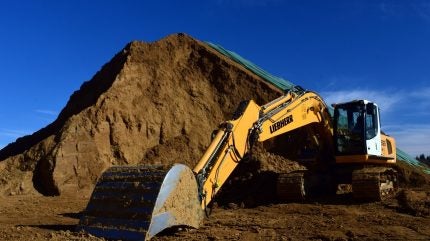Sign up for daily news updates from CleanTechnica on email. Or follow us on Google News!
The US offshore wind industry could be shunting many gigawatts’ worth of clean energy into the electricity grid right now. Instead, much of the industry has been twiddling its thumbs while other nations leap ahead. The reasons behind the slow pace of US offshore wind development are complex, but things are finally starting to pick up and a massive new workboat is here to help push the pace.
Fresh Start For 3 US Offshore Wind Projects
One stumbling block for the US offshore wind industry involves access to the specialized Service Operations Vessels (SOVs) needed for offshore construction projects. There are ways to work around the shortcomings, but it is true that the US shipbuilding industry has been a bit slow on the draw, leading to a mismatch between SOV manufacturing timelines and offshore wind farm construction schedules.
The matching-up phase is finally heaving into view. On May 11, the leading offshore wind stakeholder Ørsted and the Louisiana shipbuilder Edison Chouest Offshore formally christened the new ECO Edison SOV, billed as the “first-ever American-built, owned, and crewed offshore wind service operations vessel.”
Three US offshore projects are already lined up and ready to put ECO Edison to work, so this time around the timing is perfect.
“ECO EDISON will be delivered in 2024 and immediately provide operational support out of Port Jefferson, New York, for Ørsted and Eversource’s joint venture offshore wind portfolio,” Eco Edison announced back in March of 2022, referring to the South Fork Wind, Revolution Wind, and Sunrise Wind projects under the purview of the New England energy provider Eversource.
“The state-of-the-art, 262-foot long liveaboard ECO EDISON will serve as a floating, year-round homebase for 60 of the first American offshore wind turbine technicians, who will work at-sea over the life of the wind farms, servicing and maintaining the wind turbines,” Ørsted explained in a press statement.
What’s Taking So Long To Build One SOV?
It’s been a long road for the ECO Edison. When plans for the new SOV were announced by Ørsted, Edison Chouest Offshore, and Eversource back in March of 2022, the three stakeholders described a sprawling effort that grew into 600 jobs at three different Edison Chouest shipyards in Louisiana, Mississippi, and Florida, leveraging a manufacturing supply chain spanning 12 states: Alabama, Florida, Illinois, Indiana, Louisiana, Michigan, North Carolina, Ohio, Texas, Washington, West Virginia, and Wisconsin.
The heart of the new SOV is a power and propulsion system developed and manufactured by Caterpillar Marine, GE Power Conversion, and the firm Voith, which contributed its fuel-saving Voith Schneider propeller technology.
If you’re wondering whether or not the ECO Edison is a zero emission vessel, that’s a good question. The answer is no — for now. “The vessel will be powered by four Caterpillar 3512E EPA Tier 4 generator sets (gensets), each rated for 1700 ekW,” Edison Chouest explains, though they add that the gensets are “configured for variable speed operation, allowing for the highest levels of efficiency and minimized exhaust emissions.”
“The GE Power Conversion electrical system can operate with gensets or stored energy,” they also note. “This full configuration results in a vessel that delivers high efficiency, low power consumption, minimum GHG emissions, maximum workability and the highest levels of comfort.”
Hurdles For The US Offshore Wind Industry
When the start of construction was announced two years ago, Edison Chouest also explained that the vessel was designed “to incorporate future zero-carbon emission technology to assist in reaching carbon-neutral goals.”
CleanTechnica is reaching out to Edison Chouest for more details about the potential for a zero emission conversion. In the meantime, let’s take a closer look at the stumbling blocks faced by the US offshore wind industry.
The sticky seesaw of political opportunity has been a formidable obstacle since the Obama administration, and fossil energy stakeholders continue to gin up opposition to new offshore projects among coastal communities.
Christopher Niezrecki, the Director of the Center for Energy Innovation at the University of Massachusetts, also cites a long, twisted permitting and approval process that can add years of delay to an offshore wind proposal. Costs can unexpectedly soar during that time, as recently demonstrated by supply chain disruptions following the COVID-19 outbreak.
“Steep increases in commodity prices, including for steel and copper, as well as in construction and operating costs, made many contracts signed years earlier no longer financially viable,” Niezrecki wrote in a detailed analysis published on May 9.
Niezrecki also takes note of recent improvements, including a more streamlined approval process and a new, more flexible approach to contract-writing.
“The offshore wind industry’s troubles are complicated, but it’s far from dead in the U.S., and some policy changes may help it find firmer footing,” Niezrecki observes, taking note of new tax incentives in the Inflation Reduction Act.
What About The Jones Act?
Among other obstacles, Niezrecki mentions labor shortages, the need for onshore grid upgrades, and lawsuits from advocacy organizations and wealthy individuals aiming to protect their ocean views.
“Astroturfing groups that claim to be advocates of the environment, but are actually supported by fossil fuel industry interests, have launched disinformation campaigns,” he also notes.
The federal Jones Act is also in the mix. Niezrecki describes the Jones Act as a “significant hurdle for offshore wind development in the U.S.” However, it is not an insurmountable one.
The Jones Act has many moving elements, but the essential mission is to reduce if not eliminate the risk of foreign interference with domestic shipping in case of war. The Jones Act stipulates that only US-built, owned, and crewed ships are permitted to transport goods and services from one US port to another, including internal waterways as well as coastal ports.
What that means for the offshore wind industry depends on who you talk to. The Koch-linked right-wing think tank Cato Institute, for example, has been lobbying to repeal the Jones Act for years, describing it as “archaic” and “burdensome.”
As suggested by Niezrecki, though, the Jones Act alone is not responsible for the under-performance of the US offshore wind industry. Offshore developers have worked around the restrictions by recruiting foreign-flagged vessels or barges to hold down construction operations at the wind farm site, while deploying US-flagged ships to shuttle components and crews back and forth.
Still, having a fleet of US-flagged, Jones-compliant SOVs at the ready is a game-changer that can simplify and speed up the construction timeline for offshore wind projects, especially if the new vessels are equipped to handle the ever-increasing size of today’s offshore wind turbines.
In addition to the EDO Edison, keep an eye out for the Charybdis, another Jones-compliant SOV nearing completion in Texas.
“The Charybdis is designed to be able to handle next generation wind energy turbine sizes of 14.7 megawatts and larger, with an anticipated construction completion by late 2024 or in 2025,” the US Department of the Interior has reported.
If all goes according to plan, the Charybdis will head straight from drydock to the massive 2.6 gigawatt Coastal Virginia Offshore Wind project.
In a related development, the firm Maersk Supply Services is introducing a new multitasking installation vessel aimed accelerating the offshore wind construction timetable. The vessel is purpose-built for parking at offshore wind sites so as not to run afoul of Jones Act restrictions.
Follow me @tinamcasey on Bluesky, Threads, Instagram, and LinkedIn
Photo: The ECO Edison SOV, shown here under construction, will help speed up the timeline for offshore wind projects in the US while complying with Jones Act made-in-the-USA requirements (courtesy of Ørsted via Twitter/X).
Have a tip for CleanTechnica? Want to advertise? Want to suggest a guest for our CleanTech Talk podcast? Contact us here.
Latest CleanTechnica.TV Video
CleanTechnica uses affiliate links. See our policy here.





